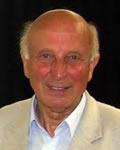
Halbfas, located in the Sauerland, made in 1952 in Olpe high school, studied philosophy and Catholic theology in Paderborn and Munich. In 1957 he was ordained a priest. From 1957 to 1960 he was vicar in Brakel (Höxter), then to 1967, lecturer at the Catholic University of Paderborn. In 1964 he received his doctorate from the Ludwig-Maximilians-University Munich with Kampmann Theodoric with a thesis on the relationship between youth and the church. With his book "The teaching of religion," he made on the discrepancy between dogmatic theology and not just a historical-critical biblical knowledge mediated attention. With his book "Fundamentalkatechetik. Language and experience in religious education, "he directed in 1968 the so-called hermeneutic turn of religious education with one. An intense debate followed._x000D_
Due to a published protocol classes to 14.22 Mt ff "walk on water" in which Halbfas clarified his understanding of biblical symbolism, Cardinal Frings of Cologne protested his appointment to Bonn from Reutlingen. The German Bishops' Conference of the Church's teaching Halbfas withdrew permission to "stake out limits that are exceeded in this book." Following this discussion Halbfas presented a request for secularization, which was immediately accepted by the Pope._x000D_
In the 1980s, initiated Halbfas (besides Peter Biehl others on the Protestant side) again a pedagogical orientation that influenced significantly under "Didactics symbol" of the religious education of both denominations. His goal was to raise awareness about the language of religion in their metaphoric and symbolic character and yet the truth of specific linguistic forms such as myth, fairy tale, legend, legend, parable to develop teaching. He realized his concept in a teaching factory, which sees itself as a religious language teaching and also includes school life, literature and art. Traditionalist circles accuse him Glaubensaufweichung. His Bible (2001) is a sum of historical-critical research done so far, understood as information for lay people, and his book "Christianity" into longitudinal sections through eras, developments and directions of Christian history.




